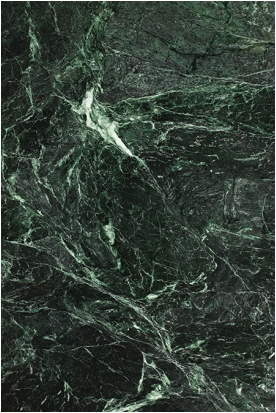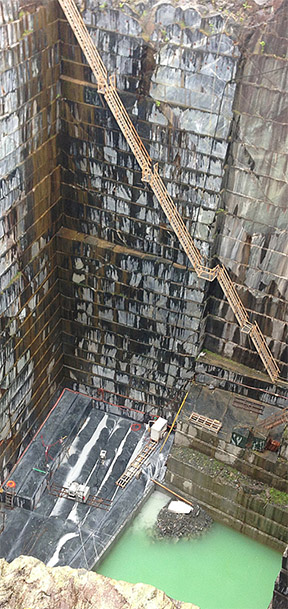Vermont Verde Antique Serpentine Stone Geology and Description
|
Vermont Verde Antique while having the “look” of marble is actually a "serpentine" and classified as a hydrous magnesium silicate. With the hardness and durability of most granite, and its low absorption rate and high flexural strength, it is an excellent choice for both interior and exterior uses.
Serpentine is a major rock forming mineral and is found as a constituent in many metamorphic and weathered igneous rocks. Serpentine’s structure is composed of layers of silicate tetrahedrons linked into sheets; this structure is what gives Verde Antique its high flexural strength rating. Vermont Verde Antique is the commercial name for the serpentine “marble” derived from highly sheared ultramafic rocks that have been rewelded and metasomatized by the process of serpentinization. These ultramafic bodies are now recognized as segments of ancient oceanic crust that became part of the eastern North American continent during the Taconian orogeny. This is considered to be middle Ordovician in age, around 450 million years ago. More deformation and metamorphism took place during the Acadian orogeny around 360 million years ago. This may have resulted in the polishable Vermont Verde Antique serpentine.
VVA Serpentine is resistant to etching by acids, making it a natural choice for kitchen and bath countertops, floors, and exterior applications. |
Vermont Verde Antique® is an exotic deep green serpentine which is crossed by veins of lighter green and white markings. It is not a marble and it is not a granite. Serpentine is classified as a semi-precious stone. It also contains traces of metallic compounds causing brilliant reflections that give it a vibrant quality not seen in other stones. |






